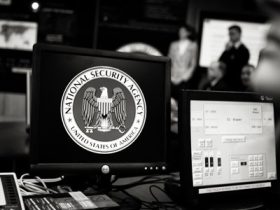HONOLULU—Pacific Air Forces’s massive REFORPAC exercise in the Pacific this summer “identified the capabilities that we need to win in this theater,” the command’s deputy leader said last week: namely, artificial intelligence, autonomy, machine learning; improved command and control capabilities; and resilient cyber networks “that can communicate securely in expeditionary environments and survive relentless attacks.”
Speaking at the AFCEA TechNet Indo-Pacific conference, Lt. Gen. Laura Lenderman said that while “revisionist autocracies” want to “upend the security, freedom, and prosperity” of the Indo-Pacific, there is “another chapter we’re writing…filled with optimism and clarity, that strengthens deterrence, inspires progress and reinforces our shared vision of the future.”
That vision was “on full display” during Exercise Resolute Pacific, Lenderman said.
The exercise included 4,000 sorties at 50 locations that spanned 6,000 miles. Shortly after it kicked off in July, Pacific Air Forces Commander Gen. Kevin Schneider said in an interview that this region “is critically important, not only to the nations in the region that touch the Pacific Ocean, but to the world.”
However, Schneider said, “from an operational perspective, the geography of this theater is incredibly challenging…so, our ability to command and control, to operate, to move with speed, scale, and agility across the vastness of this area is probably the most challenging thing that we do in not only the United States Air Force, but across all branches of the United States military.”
Maj. Gen. Anthony Mastalir, who was then commander of U.S. Space Forces Indo-Pacific, noted in the same July interview that space capabilities are also critical in the theater.
“If you’re going to project power, you have to have space. Space is the force multiplier that will allow us to project power great distances. So being able to close those gaps over the vast Pacific Ocean…in this theater, space superiority over the INDOPACOM AOR is a precondition for Joint Force success, period.”
In REFORPAC and Resolute Space, an exercise that ran concurrently, tested the ability of airmen and guardians “to conduct sustained, complex military operations involving large numbers of forces in situations where we contested air and space superiority, power projection, and global mobility, Lenderman said.
It was also critical training, Command Sgt. Major Katie McCool, command chief for Pacific Air Forces, said in July. “We want our airmen to be prepared on Day One to go into any type of contingency and be able to execute,” she said. And while those airmen and guardians are learn concepts and tactics in their initial training, “you cannot recreate the conditions there that we have here, from small islands to Alaska.”
Command Sgt. Maj. Jason Childers, the senior enlisted leader for U.S. Space Forces Indo-Pacific, had a similar take.
“You have Guardians that usually sit inside of ops centers located and distributed around the world, often not even seeing the light of day, working 24/7, operating systems that are in the space domain, so they can’t really see, taste, touch, hear, or smell the environment that they’re operating in. So, to be able to conduct exercises like this… certainly helps to robust and enhance our readiness.”
Read the full article here








Leave a Reply